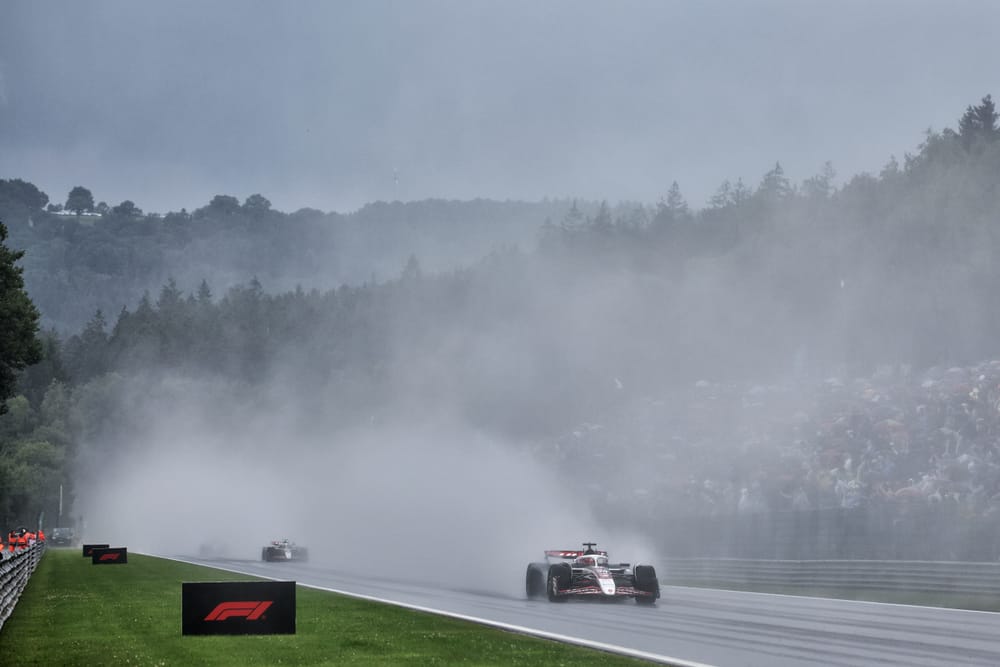Formula 1 is “calling for disaster” if it starts managing wet races differently from how it handled the Belgian Grand Prix, according to one of the most vocal supporters of the decision-making at Spa.
The choice to delay the start until conditions improved at the Belgian GP was met with mixed reaction from drivers, with the likes of world champion Max Verstappen believing calls like that were destroying F1 racing in the wet.
That caution from the race director had been prompted by a request from drivers to be more conservative after a wet British GP - but fellow world champion Lewis Hamilton said they were “overreacting”.
But there was support from drivers elsewhere and that continued when the drivers were reflecting ahead of the Hungarian GP - with Sunday’s race carrying a mild risk of rain.
“I can give an example, the first year I went to Spa was 2012 [for Formula Renault 2.0] and I was at the back of the grid,” Esteban Ocon recalled.
“It was a wet race. I couldn't see a thing, basically similar to what happened to Isack [Hadjar] when he crashed into Kimi [Antonelli, at Silverstone], except we were in Spa.
“I was P25 or something like that. I tried to look to the right to see if there was some clear vision ahead and no spray, and I backed off. I was maybe in fourth or fifth gear, probably like 160, 170[km/h].
“The moment I pulled to the right, I basically crossed the car that was parallel to the track [spun] and I just saw him when I crossed his path. If I was on the left, things would have been [different]. I would have probably had a massive injury from that.
“I've been in those situations. It's not any fun. I think what the FIA did was the correct thing for Spa.
“We don't want to race in conditions where we are not able to see two metres ahead. It's calling for disaster to happen again.
“We've lost enough drivers in those kinds of conditions and that's not something we want to see.”
F1’s last fatality, Jules Bianchi, died from injuries sustained at a rain-affected 2014 Japanese Grand Prix in the following year, while 18-year-old Dilano van't Hoff was killed in wet conditions at Spa in the Formula Regional European Championship in 2023.
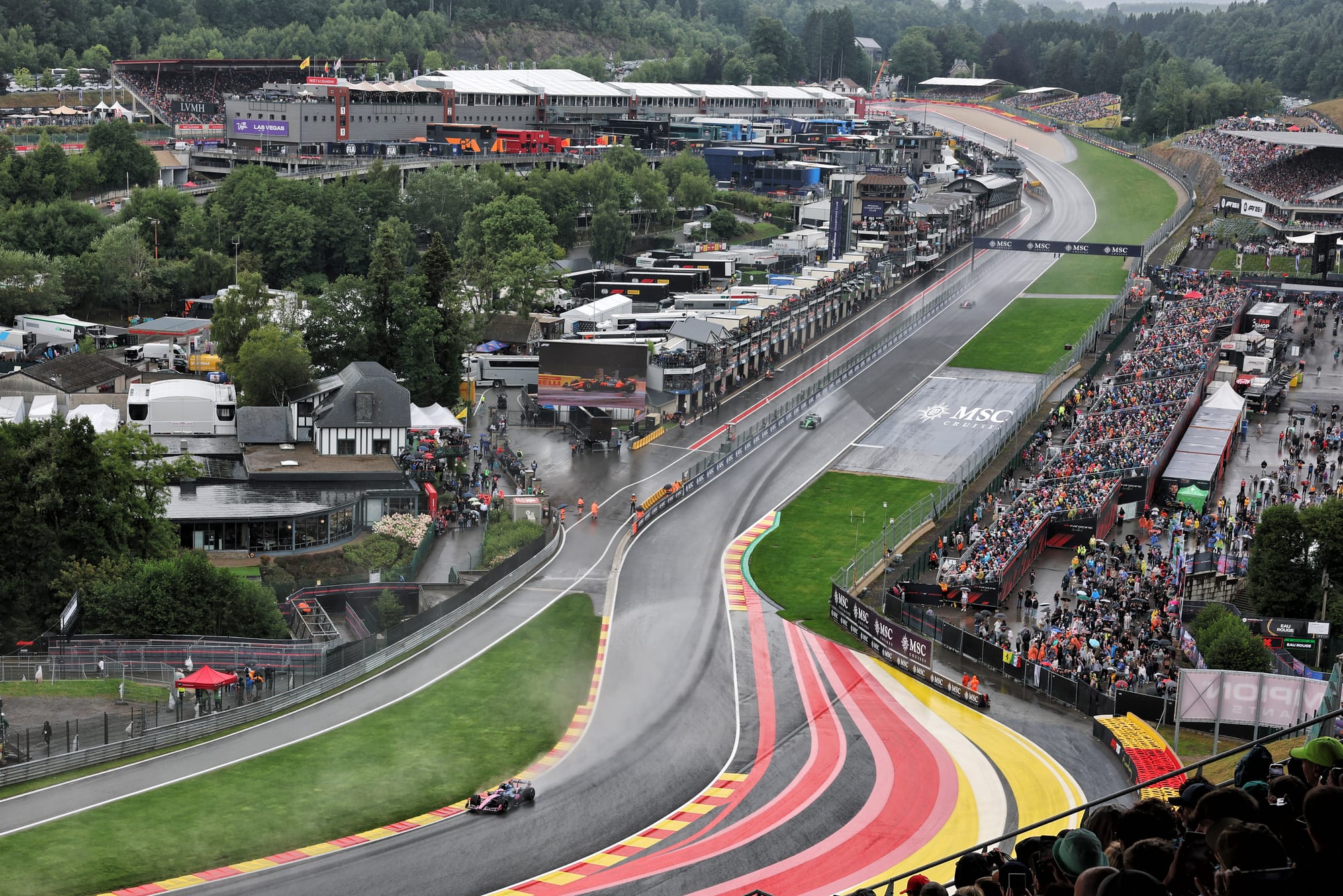
Ocon’s former team-mate Pierre Gasly echoed his support and said the drivers will work with the FIA to find the right balance.
“I don't think it's fair to say they've done a bad job. It’s explainable,” Gasly said.
“They were on the safer side this time. We'll work on that. Us drivers, we want to drive on the wet. We're fine with it. It's always exciting.
“[But] you don't want to end up in a situation where you don't see and you end up crashing in the middle of the Kemmel straight and having another incident you need to explain to another family.
“It's a fine line and we will work on it with the FIA and I'm sure it's going to get better over time.”
GPDA director Carlos Sainz felt there was potentially a communication error that made the reception to Spa worse than it needed to be.
“I think Spa is a very particular case where there's been a very dark past at this track, and the FIA consciously took a very conservative approach and they warned us on Thursday that they would take a very conservative approach,” Sainz explained.
“Maybe we should have done a better job in communicating that or they should have communicated to the fans, to the world [that at] Spa we're going to play very easy because of its dark past and this is what's happened in the past and why we're going to play it safe on Sunday, just for everyone maybe to have a bit more awareness.
“But I do think we could have obviously raced a bit earlier than what we did, and gone a bit earlier after the red flag, and [that] the safety car could have lasted a bit less long.
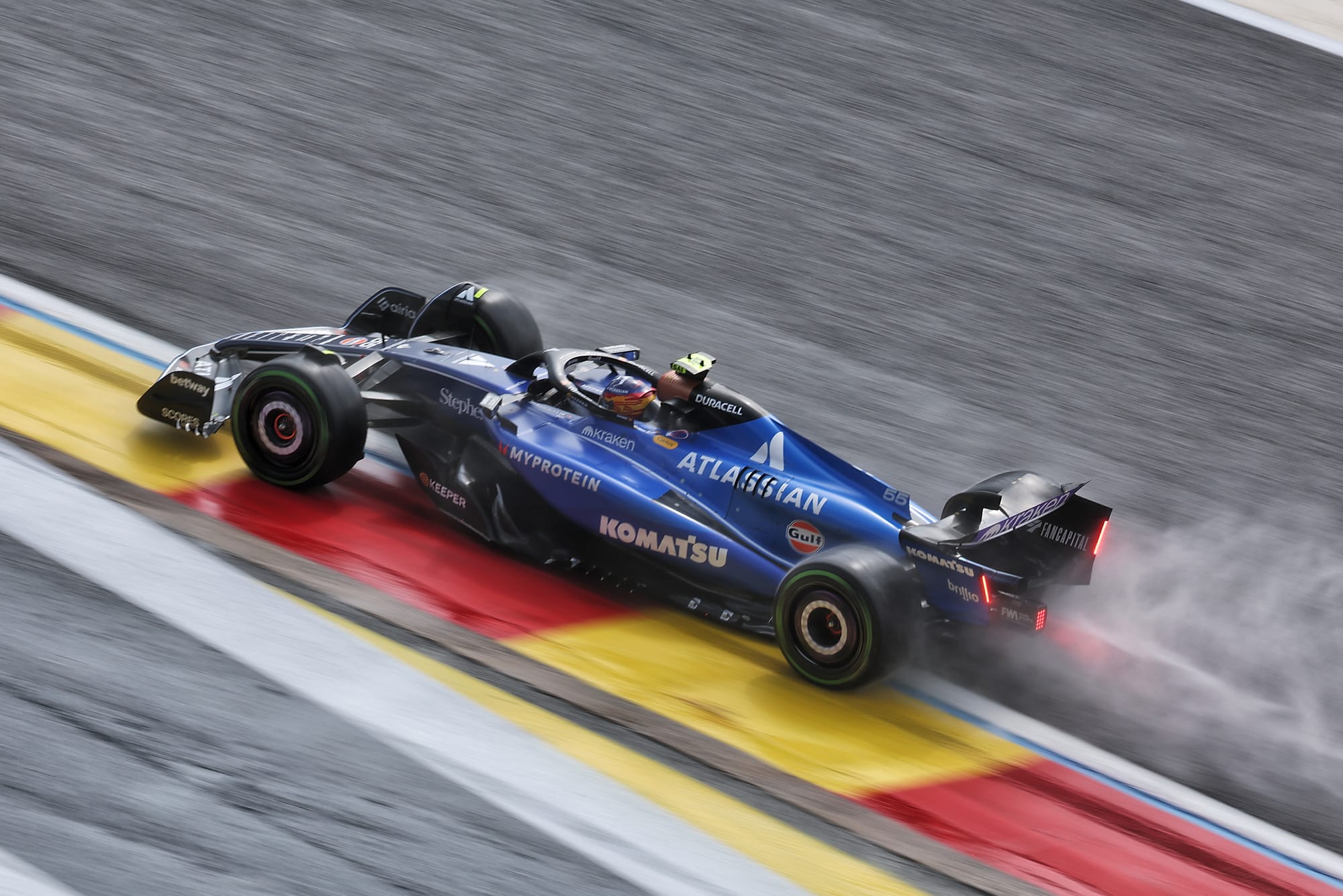
"But you also need to put yourself in the shoes of the people that press the button to say go and then there's a massive accident because of a lack of visibility and something fatal could happen.
“And they are in the end responsible for that situation to occur if you press the button. So I understand also the conservative approach they too, even though as a racing driver I wish we could have raced a bit earlier.”
Verstappen believes drivers also have to take some responsibility.
"This year's car, there is not much that you can do now," Verstappen said.
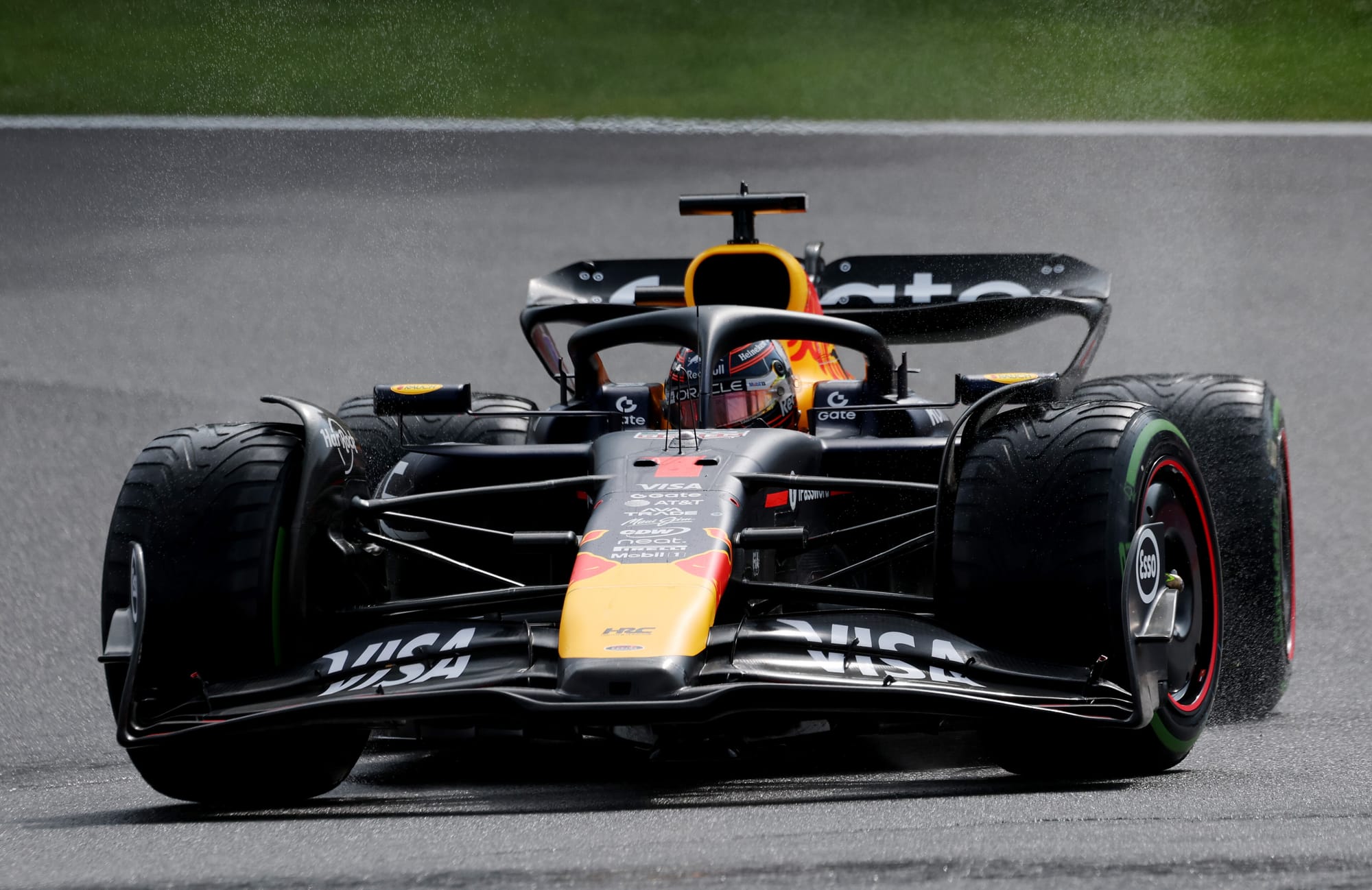
"In general it's so much of a cloud from the diffuser already that yeah, it has a lot more spray than the older cars, for example. Also with these big tyres there's a lot more water coming off them.
"So... yeah... I said it after Spa, Silverstone was probably on the edge, take it a little bit safer, but then [Spa] for me was too safe.
"On the other end, when there's a lot of spray and you can't see a lot, you can also lift! You can also make a bigger gap if you're not sure where you're going. This is something that, most of the time, when you have big accidents is when people are not lifting when they can't really see and they keep it pinned basically because they think the people in front of them or behind them do that as well.
"But yeah, it's complicated, some drivers will say the opposite to what I say, and that's fine, everyone has their own opinion.
"I just look at it as a proper race, because I think Spa could've been a fantastic rain race, like we all look back at in the past in F1, you had these great wet races, I feel like it's very rare that we get these kind of races nowadays.
"Of course I understand safety, but sometimes also as a driver it's in your hands if you can keep it safe or not. And if you can only keep it safe in almost dry conditions, then that's something that we have to look at."
What's the solution?
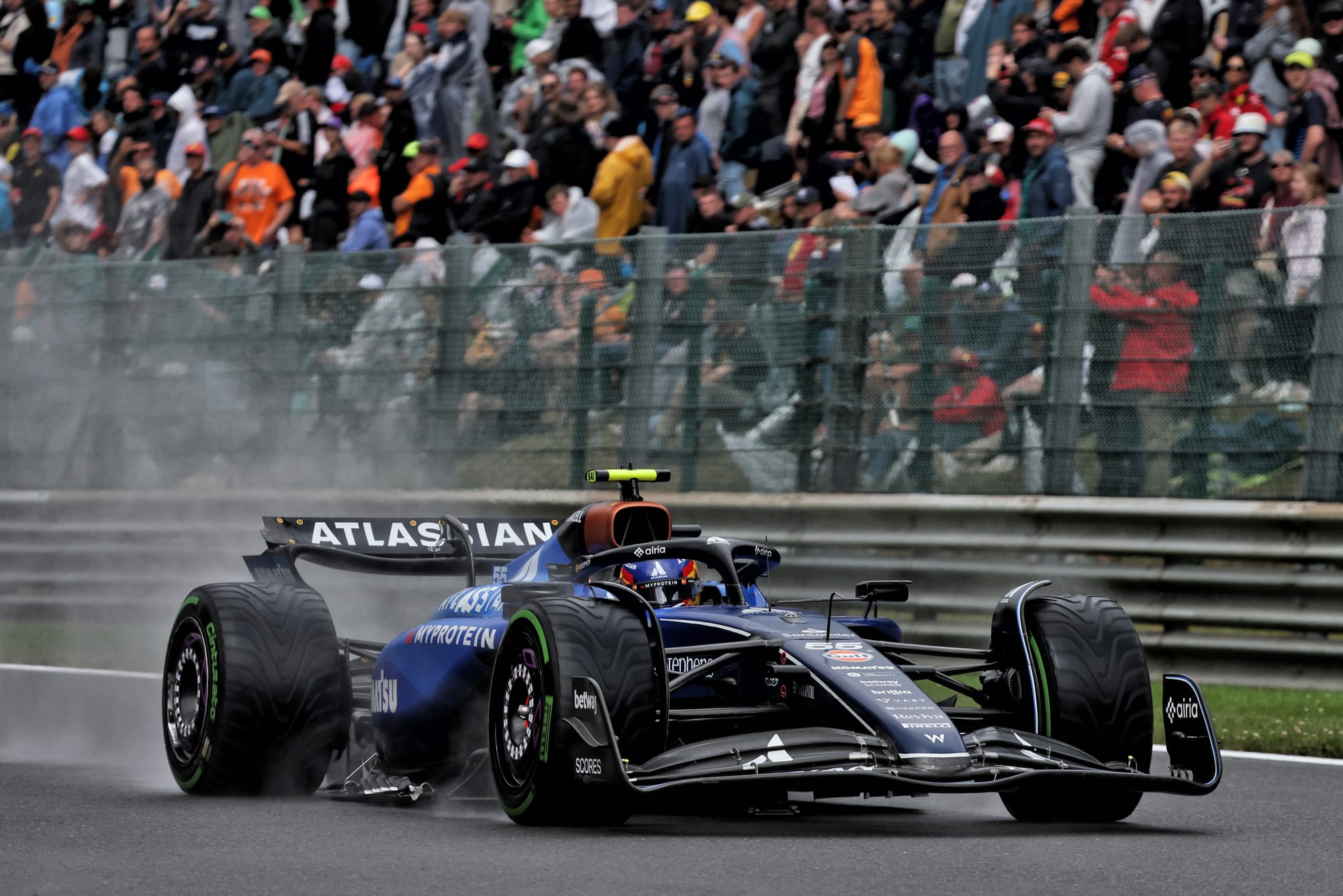
Sainz called for F1 to “try something different” and highlighted a new area of focus that hasn’t been among the most prominent post-Spa discussions.
“There's certain kinds of Tarmac that if you would put them on a straight line, there would be no spray, and they exist,” Sainz said.
“But circuits don't have them. Most circuits don't have it.
“In the end, the biggest problem for us is visibility. It's what keeps us from racing.”
His countryman Fernando Alonso backed up Sainz's view, but also added he understood that asphalt that may work better in the rain can have knock on implications for things like tyre degradation in the dry, so it's a fine balance.
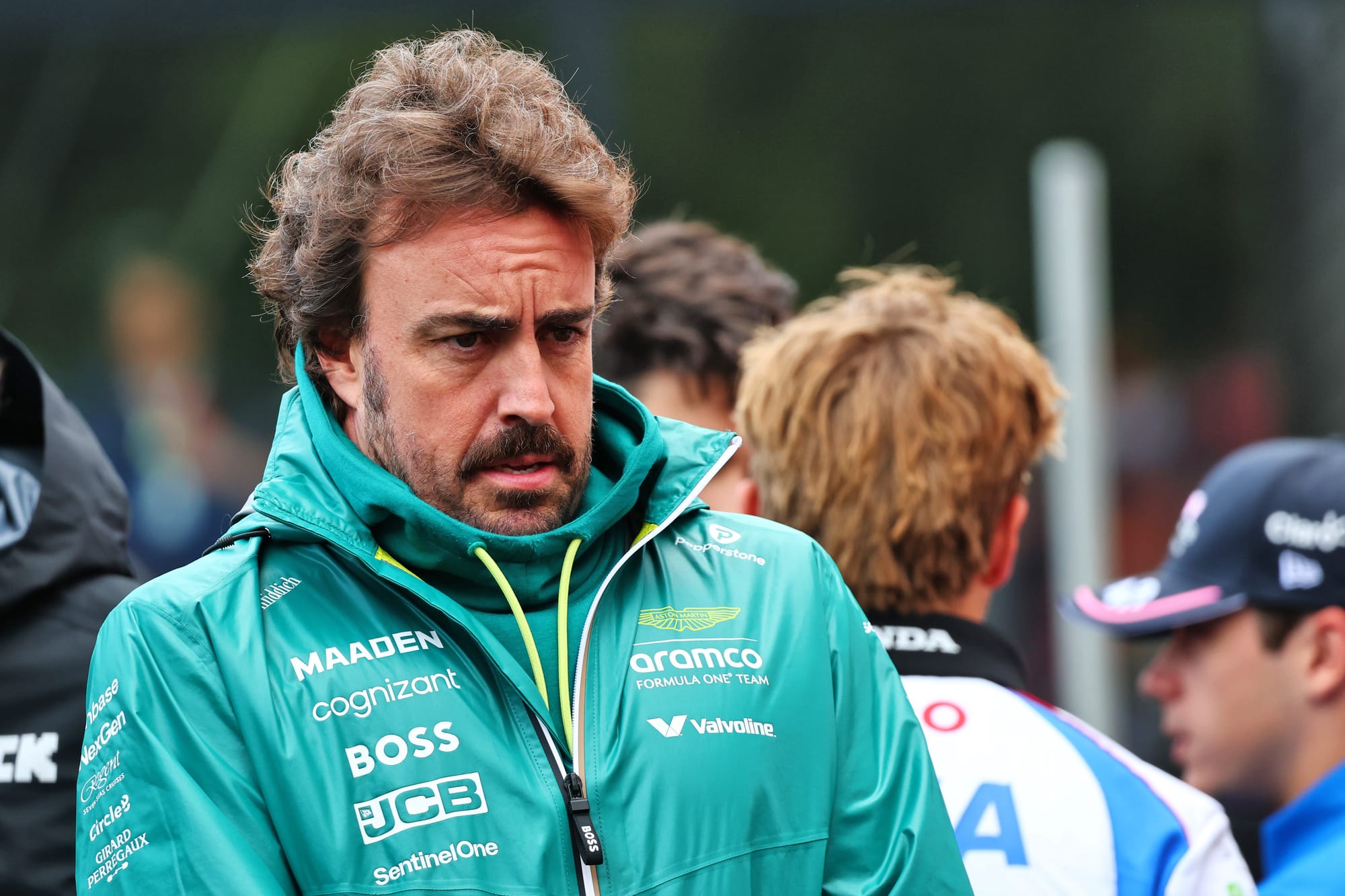
"Even some of the highways, there are some that they have zero spray," he added.
"So, if we implement that tarmac in all the circuits as a normal rule, we will have zero spray.
"Then it will be huge degradation probably in dry conditions, I don't know. But then we can work from that theme and have a starting point. But I'm just a driver."
Fellow GPDA director George Russell suggested some kind of heads-up display could help racing in the wet.
"You would have thought with all of the technology we have now, with GPS, with the heads up display [that] you have in your road cars at home, that there could be some sort of system to visually show the car in front of you when you can't physically see that car," Russell pondered.
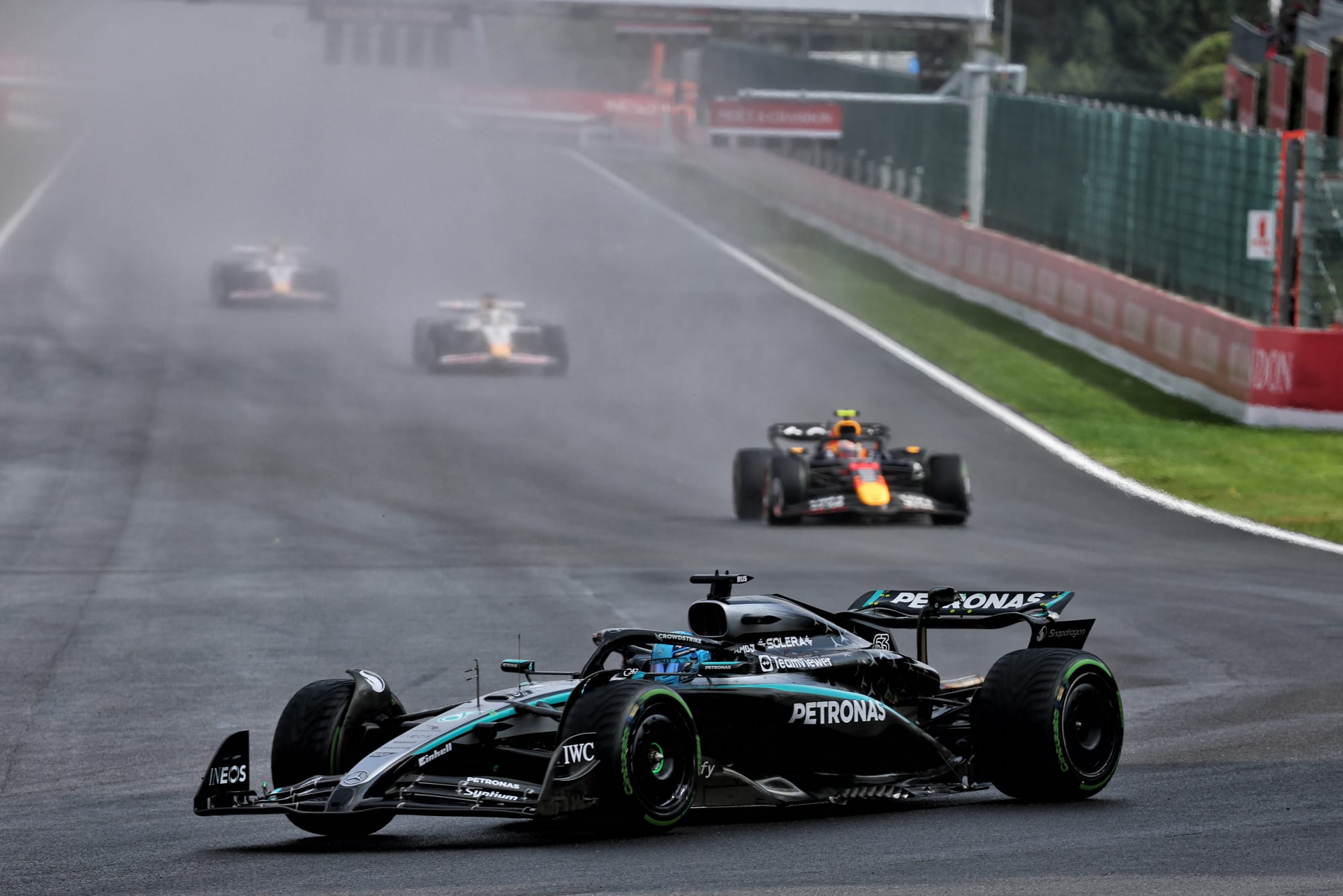
"It's the same as if when you're driving on the highway at 130km/h in the rain and you turn your wipers off, that is what we see.
"But the difference is we're doing it at 300km/h, not 130km/h. Maybe the future is some sort of virtual reality...I don't know, not virtual reality, but some sort of heads-up display showing where that car is.
"I don't know, I'm not intelligent, and it's for the smart people to come up with the solutions."
What's changed
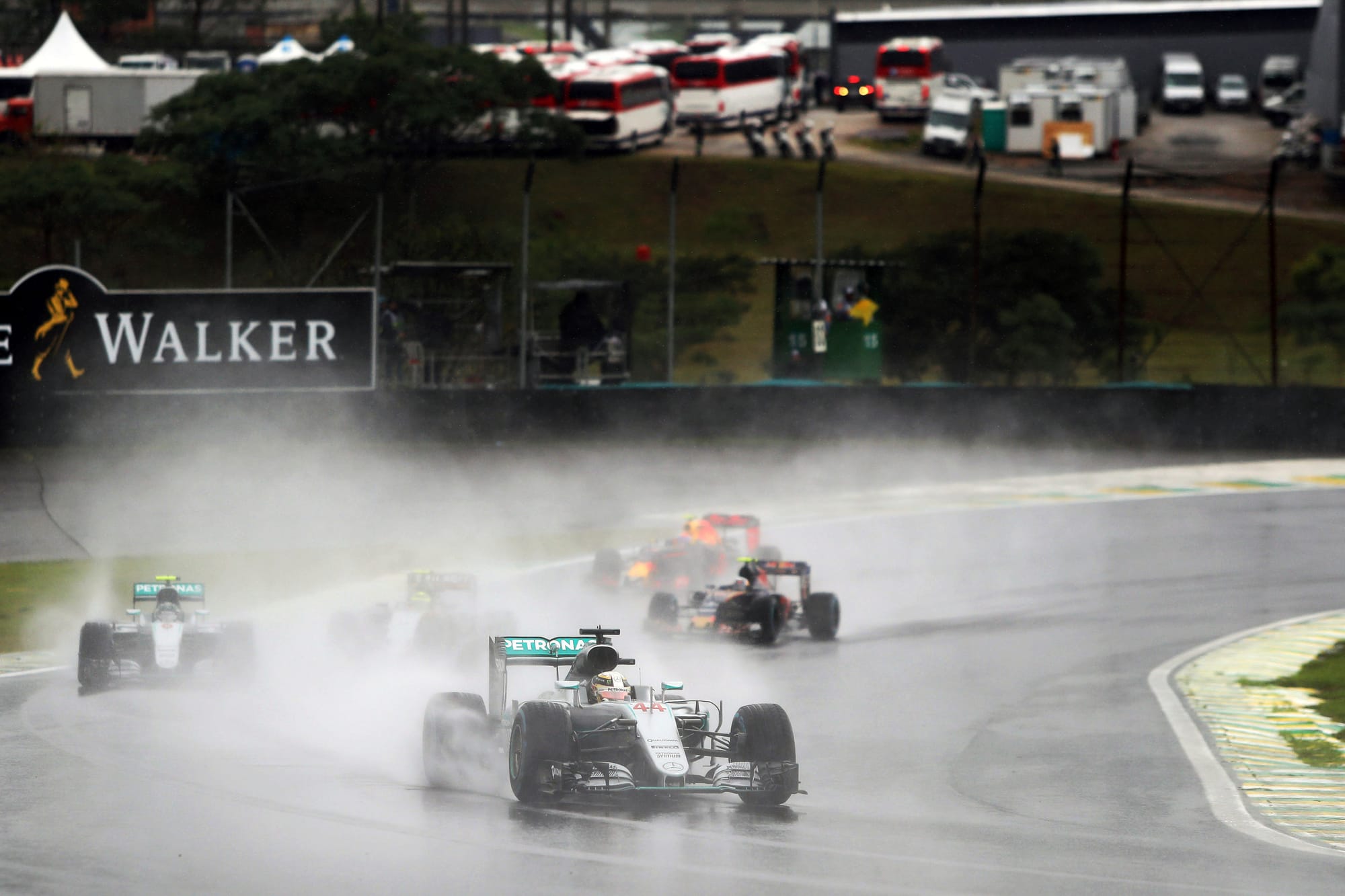
A popular contrast has been Brazil 2016 where drivers were able to race on wet tyres.
“The cars are now ground effect cars and they're much wider,” Sainz said when asked why things have change since then.
“Brazil [2016] we did the whole race on extreme tyres. Extreme tyres [now] don't work and the visibility is so bad when it rains like in Brazil where you would put an extreme tyre [on], that if in Brazil you could see a little bit - maybe 10-20% of the track - then we raced seeing 10-20% of the track. Now we still see 0% at that.
“So that's where it gets tricky. I always try to explain it in a way where, if there's zero visibility, it's down to luck whether a crash can happen.
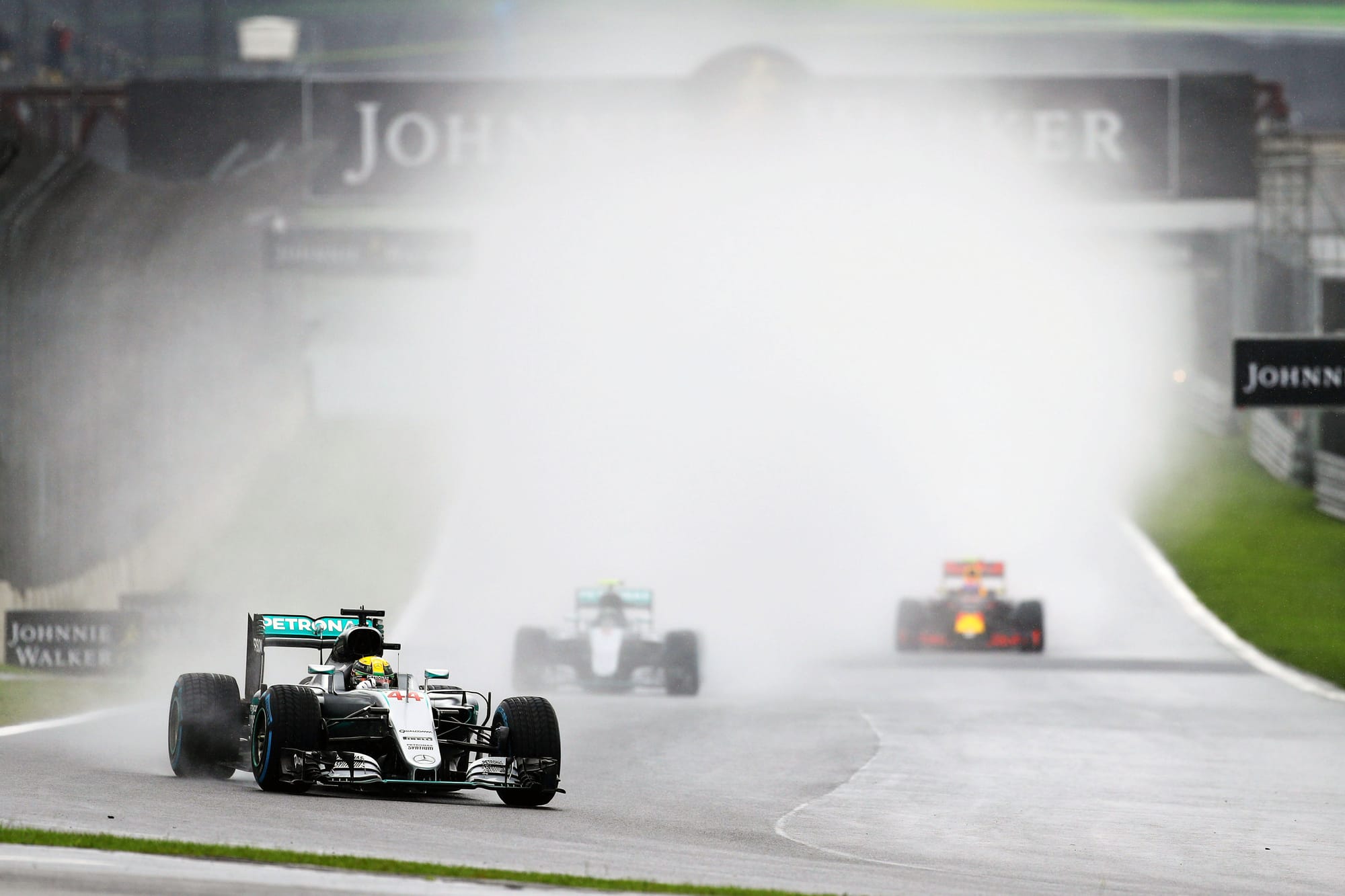
“If there's 20% visibility, I can still rely on my own talent and reflexes to avoid a car in the middle of the straight, but if it's zero, which is what the race in Spa [was like], you're leaving it down to luck whether there's a big accident or not.
“So that's always the same, uncomfortable question you need to be on going into a race like Spa.”
Ollie Bearman was 11-years-old when that race took place but said “if you look back then, the wake of the car was much more concentrated and thinner.
“Behind the car, it’s twice the width of the car, the spray behind it. Now it's like three or four times, the spray is enough to cover the entire circuit.
“Sometimes I'm driving down the straight and I can't actually see anything, and that's when it gets a little scary. Even if you can just spot a brake marker or, I don't know, a tree on the side of the track to kind of see where you are on the track, it already helps.
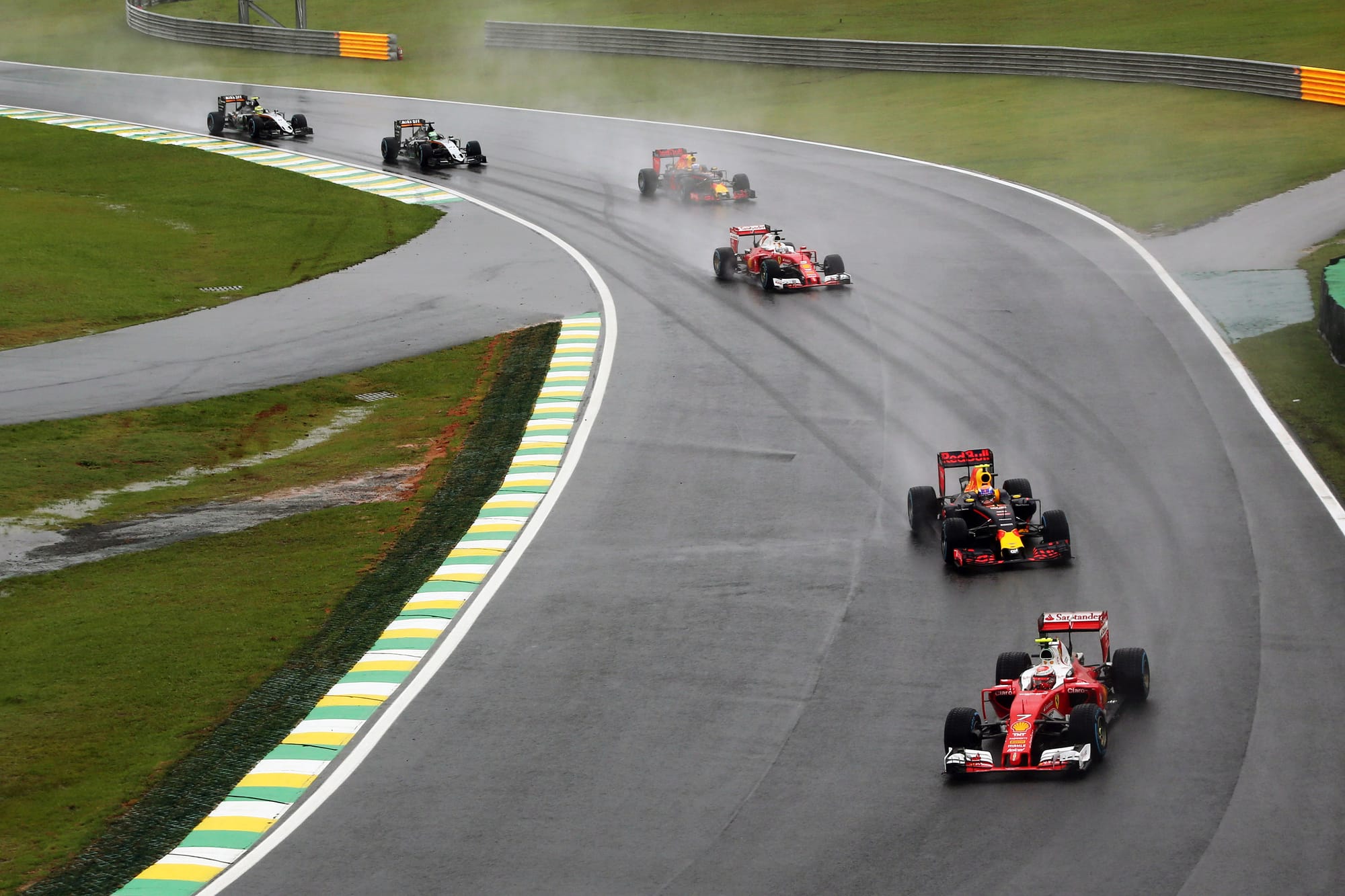
“But when the spray is just so dissipated and everywhere, it's really tough.”
Bearman said he’d have to go back to when he was racing Formula 4 for the last time he had good visibility while racing in full wet conditions.
“Once the diffuser comes then it's quite difficult to have good visibility in the wet,” Bearman explained.
“It's the age-old problem. I think it will never change. It's not a case of full wet or inter tyres, it's just level of the water on track.
“I think a good thing was that at some places on the track, like the straight before Eau Rouge, there's some grooves cut in the track now for drainage, and that was actually very good for drainage.
“If they could have that in the straights, that's where all the issues come, in the straights at high speed. If they can drain the water with those grooves in the straight line, then maybe it would be beneficial. I'm not sure.”


